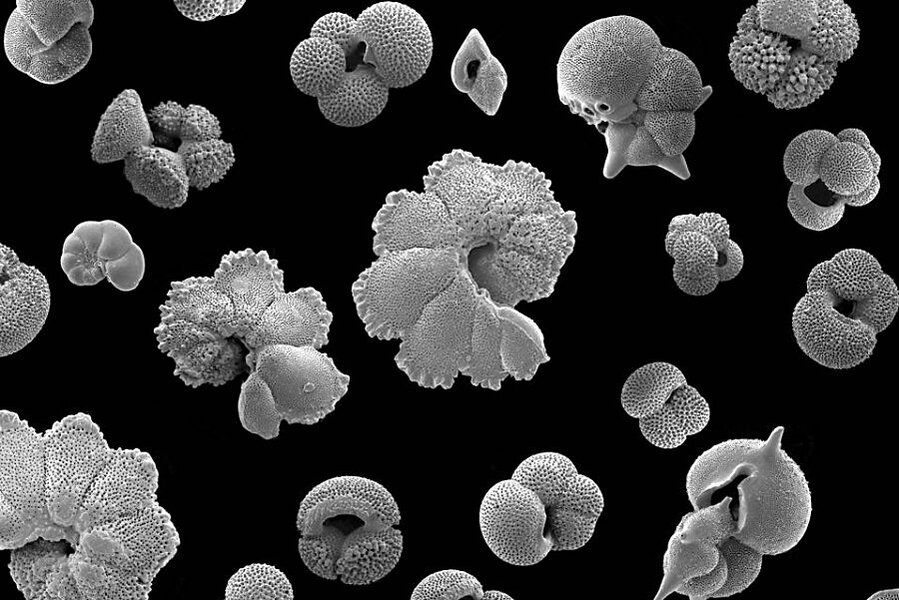What can the Eocene epoch teach us about today's global warming?
Loading...
Ancient climates can help us understand the dynamics of future climate change, the impacts of global warming, and the accuracy of current climate models, say scientists.
In a recent study, published Monday in the journal Nature, researchers delved into the character of Earth's climate during the "Eocene epoch," the first part of which was the warmest period our planet has seen in the past 65 million years.
By examining the shells of marine animals alive at the time, they were able to draw conclusions about carbon dioxide levels, and in comparing those data with temperature records, their study has important implications for our understanding of where the climate of today may be heading.
"Looking at the early Eocene gives us a picture of how Earth works in a warm climate state," says coauthor Gavin Foster, of Ocean and Earth Science at the University of Southampton, England, in a telephone interview with The Christian Science Monitor.
The importance of gleaning such insight, explains Dr. Foster, lies in the fact that the climate models we use at the moment to consider future scenarios are based on our understanding of current climate systems.
But what happens if temperatures soar by 14 degrees Celsius, which would put them on a par with the early Eocene? Or even by 3 degrees? Maybe the climate would act differently, perhaps there would be "unknown unknowns, as well as the known unknowns."
Many climate models, as used by the Intergovernmental Panel on Climate Change (IPCC), consider "climate sensitivity," generally defined as the "global mean surface temperature change following a doubling of atmospheric CO2 concentration."
So Foster and his team found a way to measure carbon dioxide levels in the Eocene: by examining the chemical composition of marine fossils – foraminifera – found in deep sea sediments, they could determine the ocean’s pH. From there, they could assess the atmospheric carbon dioxide concentrations.
"It's not as precise as looking at ice core records in Antarctica," Foster tells the Monitor, "where bubbles of ancient atmosphere are actually trapped in the ice; but those only go back 800,000 years. So beyond that, we have to use indirect methods."
Scientists are also able to establish likely temperatures in such ancient eras, using a plethora of "proxy" variables.
For example, we know there were palm trees and no ice in Antarctica, and crocodiles roamed the Arctic. Again, scientists can use the fossil record to examine shell composition, look at the shapes of leaves and the types of trees.
"The phrase 'standing on the shoulders of giants' is very apt here," says Foster. "There is a whole army of people trying to generate these temperature records."
So, armed with temperature records and their new data on carbon dioxide levels, what did the team discover?
They found that the Eocene represented one of the great natural oscillations of Earth's climate, whereby every 300-400 million years, our planet switches between a warm phase (greenhouse) and a cold one (icehouse).
The start of the Eocene was a greenhouse period, and then it transitioned to the icehouse. And that shift was accompanied by a halving of carbon dioxide levels.
Foster admits that "it's hard to nail down causality," but he and his team feel certain that the drop in carbon dioxide was the direct cause of the plummeting temperatures. Both the general warmth that characterized much of the Eocene, and then the cooling period that followed, are entirely consistent with sensitivity of the climate as predicted by the IPCC climate models and the levels of carbon dioxide reconstructed by the researchers.
The question that begs to be asked next, however, is what caused the drop in carbon dioxide levels? Foster thinks it likely that a major shift in the activity of supercontinents had a prominent role: Fifty million years ago, India was colliding with Asia, snuffing out volcanic activity that would have been spewing carbon dioxide into the atmosphere, buckling the Earth's crust, and throwing up the Himalayas.
Such epic mountain formation sparks a chain of activity that feeds the ocean with nutrients, boosts organic activity, and sucks carbon dioxide from the skies, eventually locking it away in the Earth's mantle.
Thus begins a supercycle of continental activity, which, as described in a recent paper by McKenzie et al., may well lie behind the icehouse-greenhouse variability.
"The geological record is a rich archive of Earth's functioning in different climate states," says Foster. "It's the only way of testing our climate models."






